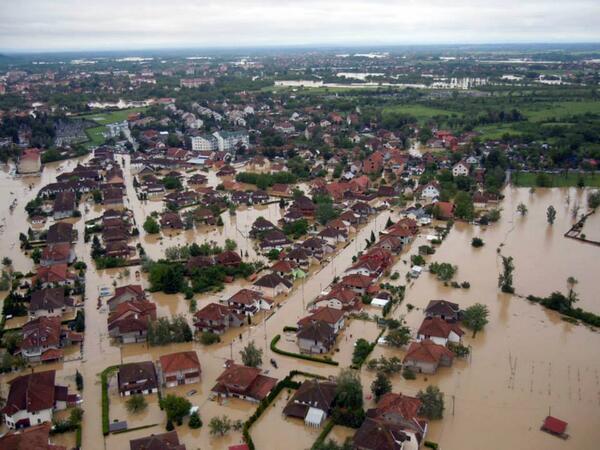The European Environment Agency recently published a report on flooding in Europe, “Floodplain management: reducing flood risks and restoring healthy ecosystems”, where researchers examined data on floods dating from 1980 to 2010, and found significant increases in flooding – which will only get worse as time goes on.
The study assessed the data, researchers have predicted that by 2050, flood losses will have increased fivefold. The fivefold increase in occurrence was attributed to climate change and increasing value of land around the floodplains, and urban development.
3,500 Flood Events in Europe Between 1980 to 2010
The study also revealed that between 1980 and 2010, 37 European countries registered 3,563 floods in total. The highest number of floods was reported for 2010 (321 floods), when 27 countries were affected. This number is associated with the ‘Central European floods’, which occurred across several Central European countries during May and June 2010.

Note: Flood severity is an assessment of flood phenomena magnitude. It considers the reported values on frequency, reported total damage (in Euros and descriptive classes), number of flood events within one flood phenomena unit and severity classes as reported in the Dartmouth Flood Observatory database (ETC/ICM, 2015b). All phenomena with fatalities are in the ‘very high’ severity class.
Italy and Hungary Most Exposed
Based on reporting from nine countries, the report maps the share of population living in floodplain areas. Among those countries, Italy has the largest population living in flood-prone areas (6.7 million people, 11% of the population) whereas Hungary has the highest relative share of people living in such areas (1.8 million, 18% of the population).
Increase in Flood Losses
According to the study, the rise in floods will only continue. The study expects flooding instances to increase by seventeen-fold by 2080. More rain will fall as the years pass because of climate change, which will contribute to about one fifth of future flood damage. But the majority of the cause will be from building on wetlands.
Annual flood losses can be expected to increase fivefold by 2050 and up to 17‑fold by 2080. The major share of this increase (70–90%) is estimated to be attributable to socio‑economic development as the economic value of the assets in floodplains increases, and the remainder (10–30%) to climate change.

Adapting Infrastructure
The study claims that infrastructure will have to be adapted in order to cope with flooding in the future, and suggested that maintenance of existing floodplains was key, whilst building new methods, and using river basins. One of the authors Beate Werner said:
“We need to free up areas for a more natural way of flood protection, giving room for the river.”
This method proved successful after Germany and the Netherlands suffered from terrible flooding in 1995, when the Rhine river burst its banks. In areas where there were fewer communities, man-made defences were destroyed so as to re-join the river with the surrounding wetlands. The study insists that this is the way forward in flood control. Floodplain land should be kept as it is – serving its purpose as was intended, in areas where fewer people live.
Wetlands International’s Jane Madgwick said last year:
“Damaged ecosystems, like the destruction of floodplains, are the hidden hand behind many supposedly natural disasters. They can be what turns extreme weather into human calamity.”
The report suggested that other European countries take the findings into account, particularly the UK which has suffered from extreme flooding over the last few winters. The UK Government are currently looking into more serious flood prevention, and the EEA’s study could be the key to its future.

